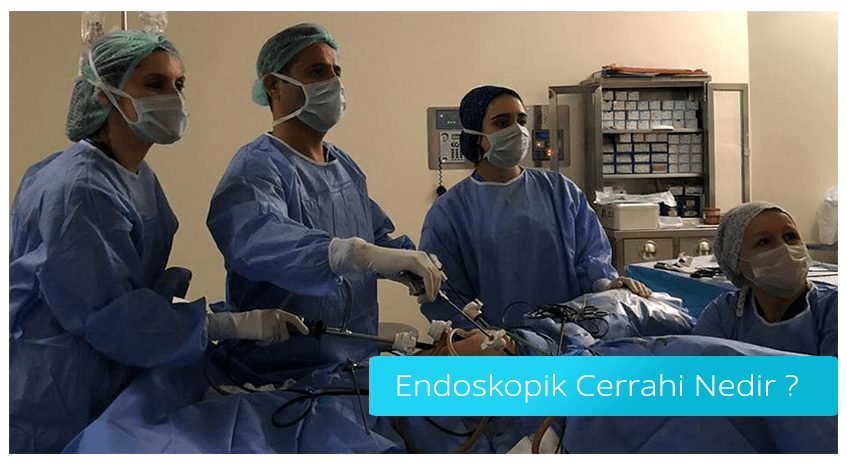Endoscopic Surgery

Hysteroscopy is the name given to the visualization of the uterine cavity with the help of an illuminated telescope. It can be done for diagnostic or therapeutic purposes. Diagnostic hysteroscopy is mostly used today for diagnostic purposes.
What is Endoscopic Surgery?
Endoscopic surgery is a minimally invasive technique with minimal damage to the tissues. Endoscopic surgical treatment with natural access to the body or smaller incisions, faster recovery after treatment and higher patient satisfaction.
Endoscopic surgery uses scopes through small incisions or natural body openings to diagnose and treat the disease. Endoscopic surgery is another popular term, minimally invasive surgery. (MIS), which emphasizes that diagnoses and treatments can be performed with low body cavity infestation.
Surgical instruments are fully under the control of the surgeon and an endoscopic camera can be used to visualize the surgical site. Postoperative freedom of movement and wound healing are quicker than open surgeries. It is possible for patients to return to work and active life earlier in the postoperative period. However, chest wall structure and anatomy in the heart must be appropriate for endoscopic technique to be applied.
Endoscopic Surgery Diseases
Laparoscopic and Hysteroscopic Surgery
You may have closed gynecological operations, such as removal of fibroids, cyst removal, correction of uterine anomalies, opening or removal of tubes, which may be necessary before and after infertility treatment. You can return to your daily life by recovering much faster.
Endoscopic Surgery Methods in Gynecology Treatment
Endoscopic surgery is divided into two as laparoscopy and hysteroscopy.
In laparoscopic surgery, it is the procedure of imaging the inside of the abdomen with the help of camera by making three incisions of 0.5 cm in the abdomen. By entering these small places, almost all operations related to gynecological diseases can be performed.
Hysteroscopic surgery; and the diagnosis and treatment of the uterus.
What are the advantages of laparoscopic surgery over open surgery?
In the operations performed with laparoscopic surgery, the patient’s postoperative pain hearing rate decreases, the duration of discharge is shortened, it can return to daily activity more quickly, and aesthetically, no scarring is seen in open surgery.
What operations can be performed in gynecological diseases in laparoscopic surgery?
With laparoscopic surgery, almost all operations involving gynecological diseases can be performed. The basic principle of laparoscopy is to shorten the operation time of the patient, to have less pain and to return home and work more quickly.
If we list the operations that can be performed with laparoscopy; ectopic pregnancy operations, ovarian cyst operations, fibroids operations, tube-related operations, uterine removal operations (hysterectomy), urinary incontinence operations, uterine prolapse operations, uterine prolapse operations after the uterus removal, bladder sagging operations, uterine cancer, especially endometrial cancer operations approximately 0.5 It can be made by entering three small incisions of cm and the patient is discharged from the hospital on the same day or the following day and can return to daily activity within the same week.
What is the role of laparoscopic surgery in the treatment of infertility?
We often use laparoscopic surgery in the diagnosis and treatment of infertility. During laparoscopy, it is possible to define whether the uterine canals are closed by giving dyed material, and if the obstructed part is able to function on the outside of the canal and the duct can function, it can be ensured that the patient becomes pregnant. Uterine fibroids can easily be removed by laparoscopy. Chocolate cysts (endometrioma), which are thought to cause infertility and reduce the ovarian capacity when left untreated, are also removed with minimal damage to the ovarian tissue by laparoscopy.
What is hysteroscopic surgery?
Hysteroscopic surgery is the visualization of the inside of the uterus with the help of the camera and the recognition and treatment of the abnormal formations in the uterus.
Who should undergo hysteroscopy?
Since hysteroscopy is performed for both diagnostic and therapeutic purposes, it can be performed to remove unwanted structures such as polyps, fibroids, and suspensions in the presence of a congenital intrauterine curtain (septum), and to open adhesions if there is intrauterine adhesion.
What is the role of hysteroscopy in the diagnosis and treatment of infertility?
Buildings occupying space in the uterus; polyp, fibroids, septum should be removed before infertility treatment. Because a good quality embryo obtained by assisted reproductive methods cannot continue its development if the uterus is not suitable. If there is adhesion in the uterus, it should be opened by hysteroscopy before the treatment for the same reason.
It is recommended to perform intrauterine hysteroscopy before a new treatment in patients who have not achieved pregnancy despite good quality embryo transfer in repeated IVF applications.
In hysteroscopy performed for diagnostic purposes, the structure and vascularization of the inner lining of the uterus can be examined and evaluated before IVF treatment.
In hysteroscopies performed for therapeutic purposes, anesthesia is usually given and after the cervix is enlarged, a device called electroresor is inserted.
The electroresor is the same device that urologists use for prostate resection. With this device, the curtains in the uterus can be cut (septum incision), large polyps and fibroids can be removed. In addition, intrauterine adhesions can be opened.
Hysteroscopic Polyp Excision Surgery Videos
By hysteroscopy, the endometrium of the uterine lining can be removed to treat women with excessive bleeding and who no longer wish to have children. This procedure is called endometrial ablation. Hysteroscopy is also possible with the use of scissors or lasers, but today most of the electricity is used.
Hysteroscopic Septum Resection
Hysteroscopic Polyp
In hysteroscopies performed for therapeutic purposes, anesthesia is usually given and after the cervix is enlarged, a device called electroresor is inserted. The electroresor is the same device that urologists use for prostate resection. With this device, the curtains in the uterus can be cut (septum incision), large polyps and fibroids can be removed. Intrauterine adhesions may also be removed


Add Your Comment